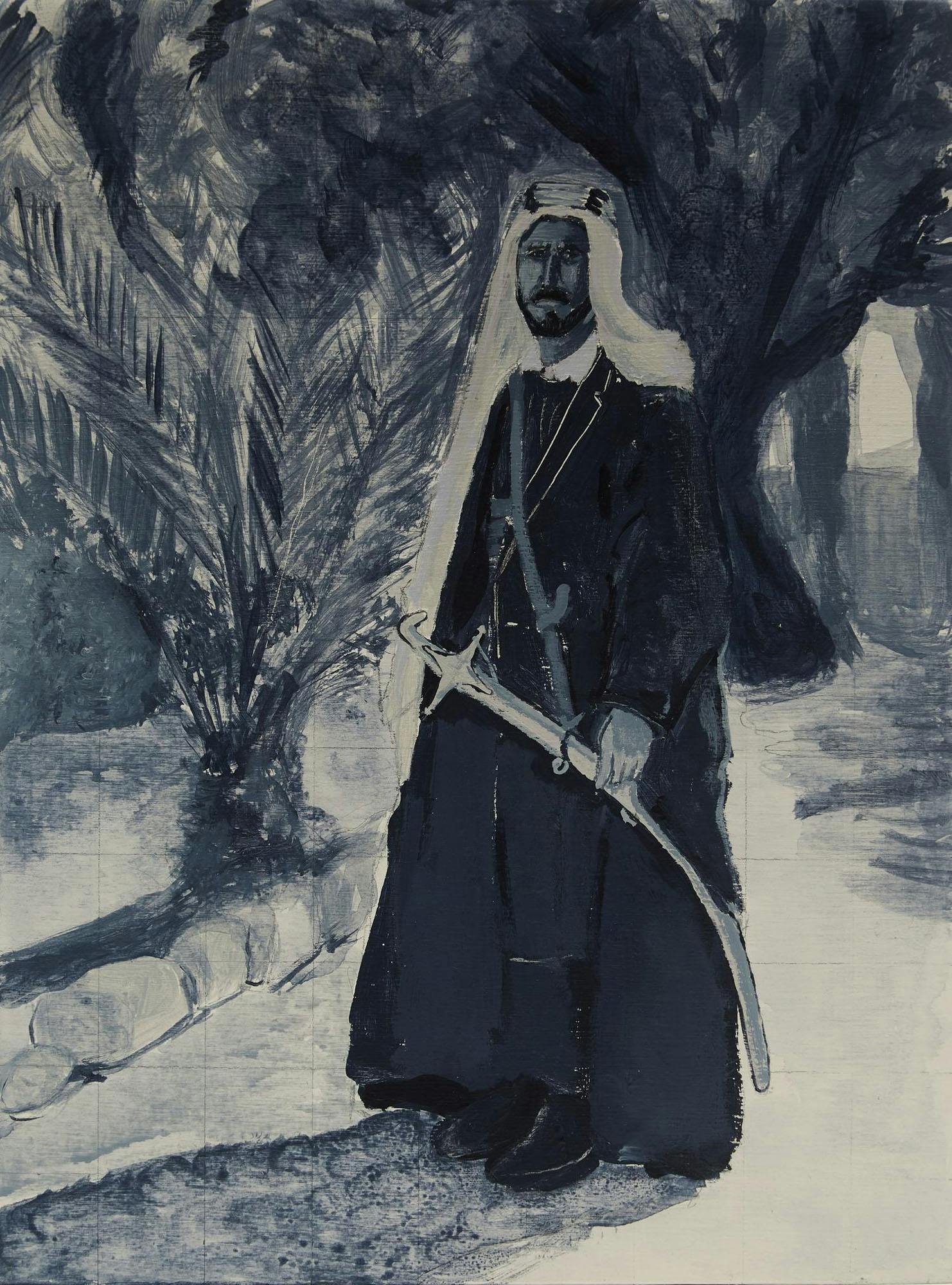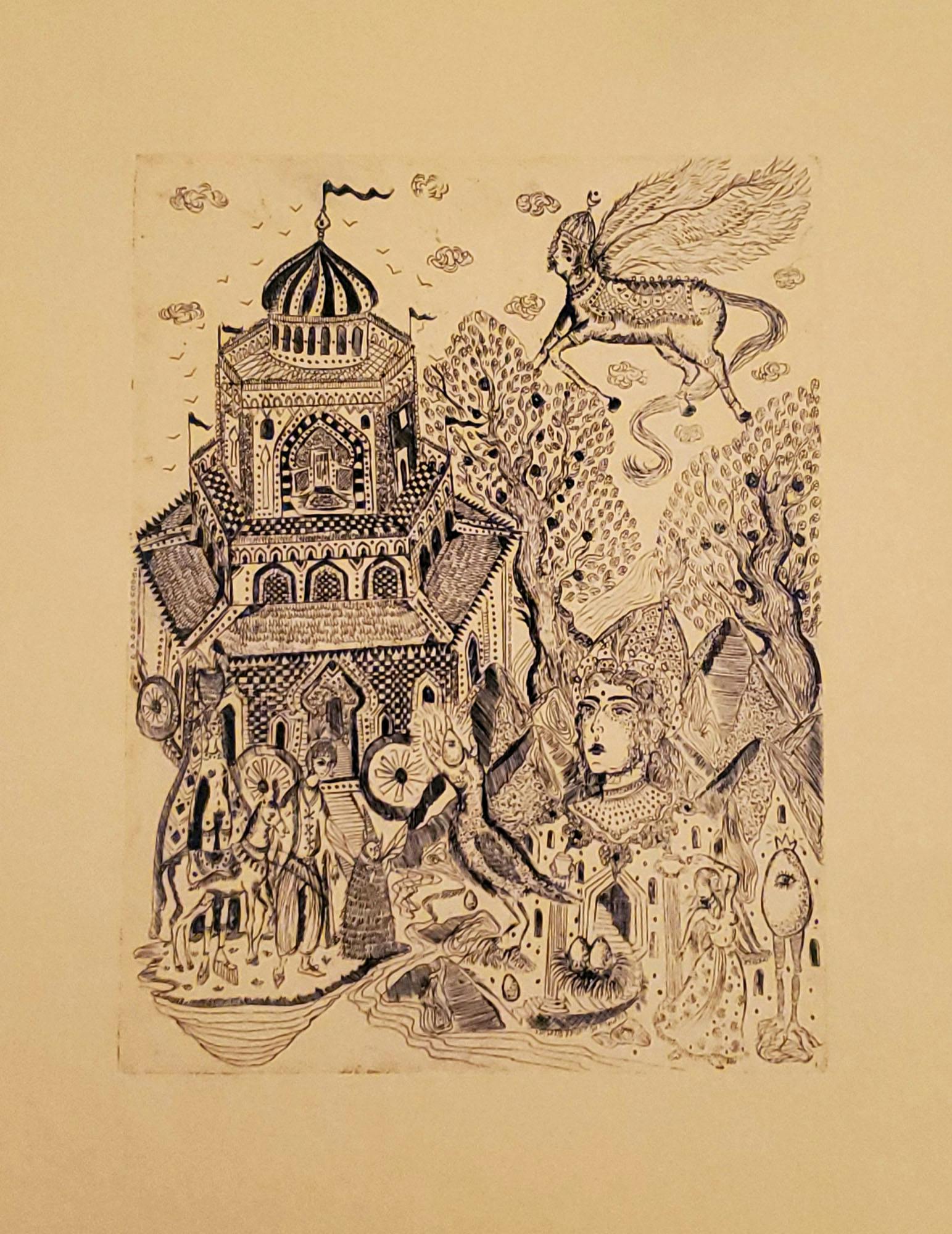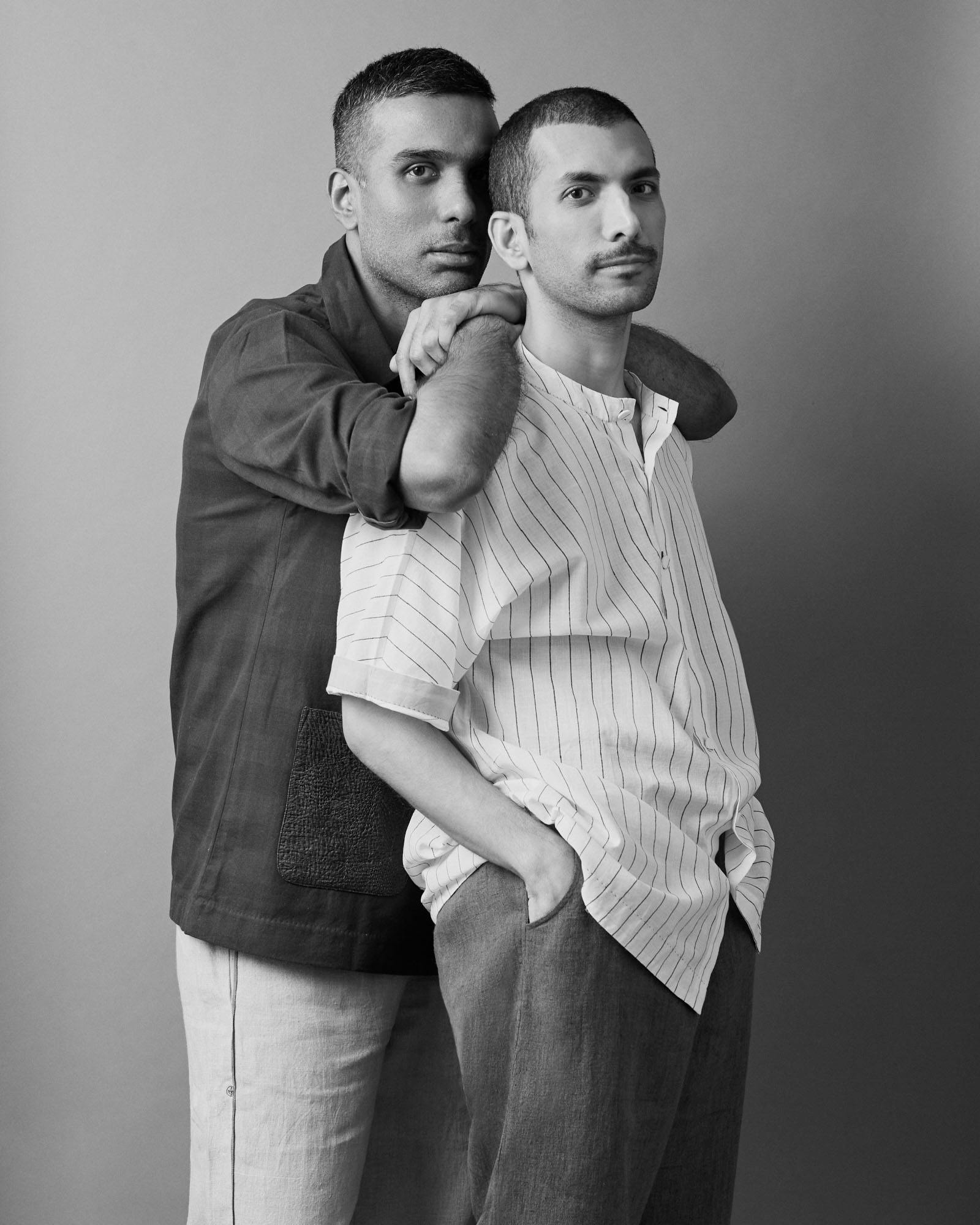A Bouquet of Flowers
The relationship between Palestinian identity, survivor guilt and his art practice.
Story by
Ibrahim Abusitta & Abdelrahmen Kamel
Published
March 1, 2021

Abdelrahman
Can you take us back to how it all began?
Ibrahim
My aunt recognized me drawing all the time as a kid. She bought me a sketchbook and said, “this kid enjoys drawing. We should be supporting this idea.” No one in our household really thought, you know, the arts is something that should be nourished. I didn’t get to go to any art school or arts high school.
Then someone once asked me what I would do if it could be anything and without any hesitation, I responded “artist.”
Abdelrahman
Did it take any convincing or was there any resistance from your family to pursue a career in arts?
Ibrahim
I told my parents I wanted to go to art school. I definitely wasn’t going down the path of being a doctor or engineer. They both knew that. There was a bit of a hesitancy before an acceptance to “do what your heart desires.” It was almost like a compromise because I pursued a degree in the arts. The status of a university degree was plenty enough for them and since then, they’ve been very supportive. They’re just happy to see something visual being created.
Abdelrahman
What are the effects of identity in your work?
Ibrahim
My name reveals my identity and there’s an importance in that because being a Palestinian has such a politicized element to it. It’s loaded. My work has my identity embedded in it whether I can control it or not. I think once you know who the artist is you connect their identity to their art. This is my assumption on how I think the viewers would read the work.
Abdelrahman
In your recent work titled Diary of the Usual Sadness you referred to the Palestinian poet Mahmoud Darwish’s work on the ambiguity of the identity of people living in occupied lands. My question here is, does the work of Arab or Palestinian poets, painters or activists ever inspire your work?
Ibrahim
There’s inspiration from many Palestinian artists in my life and work. Mahmoud Darwish’s poetry was first read to me by my parents. They aren’t necessarily the biggest arts patrons but when it comes to notable Palestinians, they’re proud and happily drop names like Darwish, Ismail Shammout or Sliman Mansour.
It’s inspiring to see successful Palestinian artists that are getting their time in museums and galleries and getting recognition. The mere fact that there are contemporary or established Palestinian and Arab artists out there currently working acts as a source of inspiration for me.
Abdelrahman
Your use of colour and texture speak to memory and time. How do these concepts intersect? Can you please elaborate on this?
Ibrahim
I was working on a series that was touching on nostalgia and I used colors that were a bit muted. I would try to create this idea of worn out or aged texture through this sgraffito technique which is scraping into a wet medium to reveal the layer beneath it. Other times, I sand away some of the paint so you can see some of the woodgrain fading or showing through the work.
There’s a palette that sort of happens…colors that I fall for. It ends up coming from the subconscious for me where I choose what feels right. Combined with the texture, I think it illustrates feelings. I feel there’s something about memory and time this all evokes.
Abdelrahman
I noticed that in the series that was addressing sadness you used darker colors, but then the series that was concerned with nostalgia some of the work had very vibrant colors like yellow and in bright blue. Do you feel like whenever you pick up a color it has to do with your mood at the time or your mental state?

Ibrahim
Yeah, definitely. There was darkness in my work series Diary of the Usual Sadness. It was one of those things where I didn’t know what came first, the sad palette or the idea. I started making the series, without a plan, and it evolved over time. The full series and references came in the middle of the end of the project.
The sadness had a lot of erased texture. The vase, base, and the stems had a different texture and the flowers in the bouquet would have a really chunky texture. Having a difference in the two textures wasn’t a conscious thought. I was creating the work and it had something to do with the dualities of all these ideas of identity and of being and not being, of belonging and not belonging and being a part of the Palestinian diaspora. I don’t truly know what life is like for Palestinians. I feel their trauma based on the stories that are passed down to our generations. But we never directly experience it. I feel their pain through the media images and without really witnessing it firsthand.
There was something of a desire to evoke a good feeling in A Past Life That Exists For Nostalgia series. I was doing a lot of feasts with monochromatic magenta, bright colors. People were telling me it reminded them of someone or a time that they haven’t experienced but longed for. Many of us share this idea of wanting to exist in a different time other than our own because it’s assumed to have been better.
Abdelrahman
How do you feel considering the recent events in the Palestinian Israeli conflict?
Ibrahim
All these events were unfolding in Palestine while I was in the middle of creating work. It took a mental toll. There’s this never-ending feeling of survivor’s guilt. I don’t have to suffer. They suffer. I don’t want the suffering to happen to them so I suffer with them but I never suffer the same way. It’s the only way to describe it.
I don’t think a day goes by in my life where I don’t think about Palestine. In my mind, I try to come up with the utopian fix where you think you can just solve it if you can only go back in time or all these fantasies that start to proliferate, or a deep desire to have a realistic approach. How does the future look? How do we reach a point where Palestinians are free? These were my thoughts while I was making a series of bouquets of flowers.
Abdelrahman
What was, if any, the impact of migration or travel on yourself, identity, and experience in understanding the world around you?
Ibrahim
I was born and raised in Saudi Arabia. I never got to live in Palestine. There was an identity crisis being an outsider growing up in Saudi Arabia. But you’re also an insider because you speak the same language and share the same religion. I always wanted to consume my content in English because we were sent to private English schools. I grew up with Hollywood movies and English-language music.
I was a teenager when we moved to Canada and at first thought, “I’ll fit right in.” I get the lingo, have seen their movies, and so on…and of course, you arrive, and you’re still an outsider.
I’ve had many lived experiences which gives me a complex yet informed view of how culturally different we all are in different parts of the world. That has shaped me to who I am now.
Abdelrahman
I also grew up in the Gulf and can definitely relate to your experience. I’m Egyptian but I grew up in Qatar. The experience of fitting in Qatar is quite difficult because I grew up in a conservative household, went to an American university and watched Hollywood movies. I guess it’s hard to understand the context that we come from. It’s very hard to communicate to people, especially here in Canada the experience of not being able to fit in. I guess like, what helps is that there are a lot of people who are from the same context that I come from. So surprisingly enough, I met a couple of people who came from Saudi Arabia and like the Gulf and the UAE, and they all express the same feeling that not having a solid identity can give you the flexibility of understanding other identities or being more open to dialogue.
Ibrahim
It’s a strength.
Abdelrahman
Can you please tell us more about your involvement with the Black, Indigenous and People of Color movement in Toronto’s commercial art galleries?
Ibrahim
The whole world watched the murder of George Floyd in May of 2020. We all knew this about police brutality against marginalized people. There was this feeling of helplessness seeing this unfold during lockdown.
Many Toronto galleries were sharing the black square posts which have become infamous now. Many people saw this as disingenuous and performative. I took it upon myself to hold up the mirror to these galleries because the artist (Esmaa Mohamoud) that first shared this on Instagram was saying that none of these galleries even represent any Black people yet here you are showing solidarity.
That was the starting point for me. I made this chart where I looked up 18 galleries and began an independent research documenting the roster of artists that galleries represented. I tried to organize this into different categories…race, identity, men, women. I shared this on Instagram and it got quite a bit of attention from the arts community- beyond the galleries. It began a bit of a trend where artists from other communities put in the same work.
One thing that stood out to me was I never found one Palestinian artist represented by any of them…like zero out of eighteen galleries. That was another punch to the gut of reality. There’s a lot of Arab artists in Canada and not seeing them represented was disheartening. On the other hand, it was also motivating to make me aware that when I do work with the gallery, I want them to care about people that they represent and not to just be sort of biased towards white male artists of a certain age or of a certain class.
What I did was very minimal and I know it will be even more impactful to start looking at arts institutions, museums and not-for-profits and keep going down that line. I did an interview and wrote an article with a Canadian art magazine. I’ve also been reached out to by quite a few artists from the BIPOC community asking if they could reference my work in their articles or research. I even heard from a couple of notable artists who left their gallery after seeing my researched work.
The best thing that came out of it was starting the conversation and getting everyone on board with this idea of deeply looking at organizations that you work with.
Abdelrahman
My final and favourite question to ask artists is, when you start a new painting or a series of paintings, how do you know when you’re finished? Do you ever feel as if you have communicated everything you would like to say through your artwork?
Ibrahim
As long as the work lives with me in the studio, it’s never finished. The work is finished when it leaves the studio because then, I can’t change anymore.
Links
Ibrahim Abusitta
Website
Abdelrahman Kamel











